This condition is characterized by the gradual loss of your eyes' ability to focus on nearby objects. It's a natural, often annoying part of aging that usually becomes noticeable in your early to mid-40s.
What is Presbyopia?
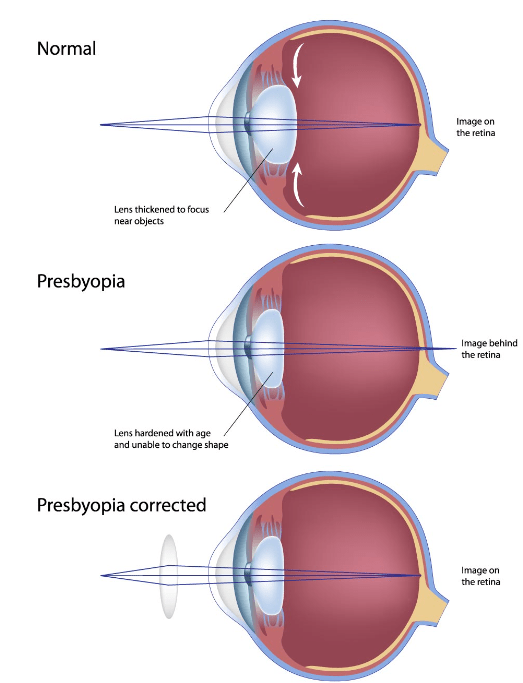
Vision Center/Optical records are stored on-site for this number of years from the origination of the date of the record then sent to off-site storage.
What is 2 Years?
VCOG 1110
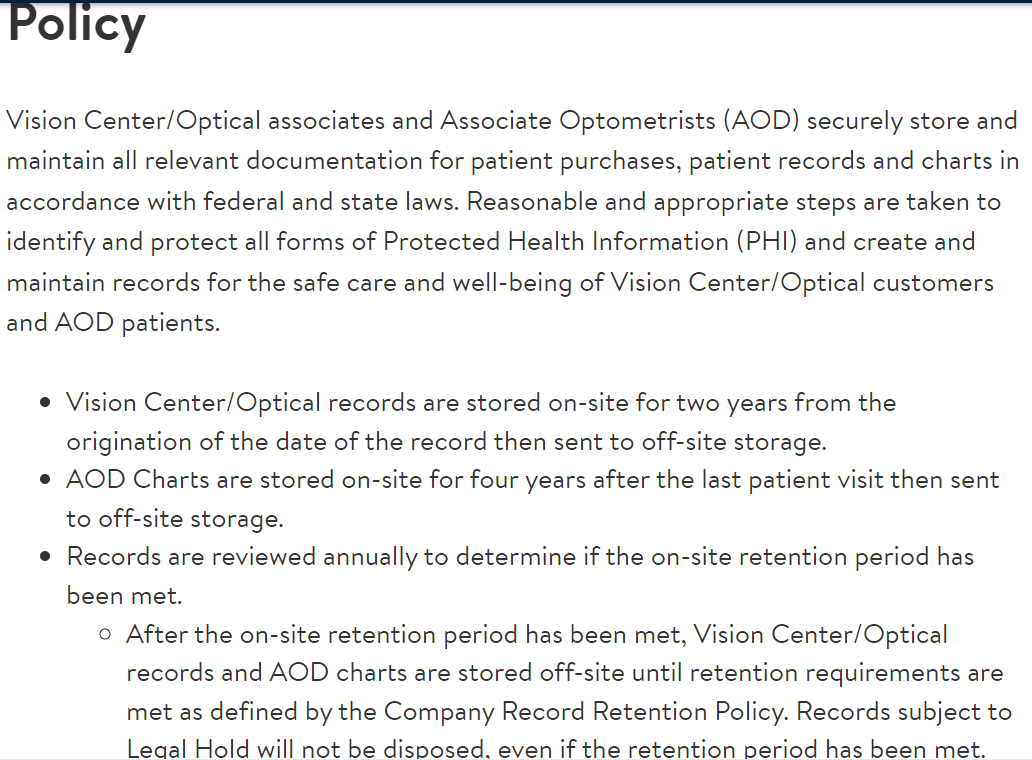

This is a type of Strabismus - Estropia
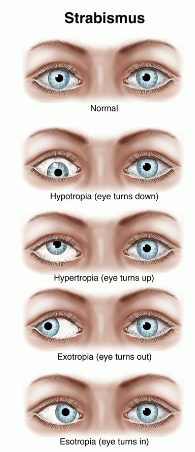
This condition is the leading cause of blindness in American adults.
What is Diabetic Retinopathy?
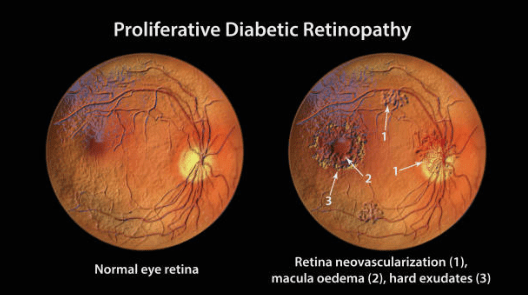
Common Eye Disorders and Diseases | CDC
The Federal 2021 Consolidated Appropriation Act created the No Surprises Act (NSA) and __________ which adds consumer protection from surprise billing activities from health care providers and health care facilities.
What is Good Faith Estimates (GFE)?
VCOG 1516 - Good Faith Estimates
The GFE will ensure price transparency to our patients and members. Walmart and Sam’s Club Associate Optometrist (AODs) and Vision Centers/Optical departments are required to comply with the NSA and GFE requirements identified in this policy.
This condition is characterized by a large difference in the degree of myopia or hyperopia between the two eyes. It usually develops before age 6 and does not affect side vision. Eyeglasses or contact lenses cannot fully correct the reduced vision.
What is Amblyopia (lazy eye)?
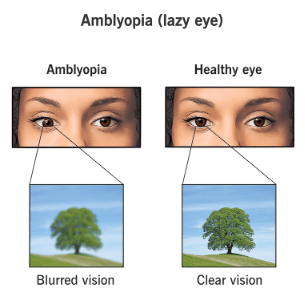
A patient presents to the vision center with a prescription for his eyeglasses on his phone. What is the proper way to handle this situation?

What is ask the patient to print the rx, contact the doctor to ask if a copy of the rx can be faxed, ask the patient to email the rx to the VCM?
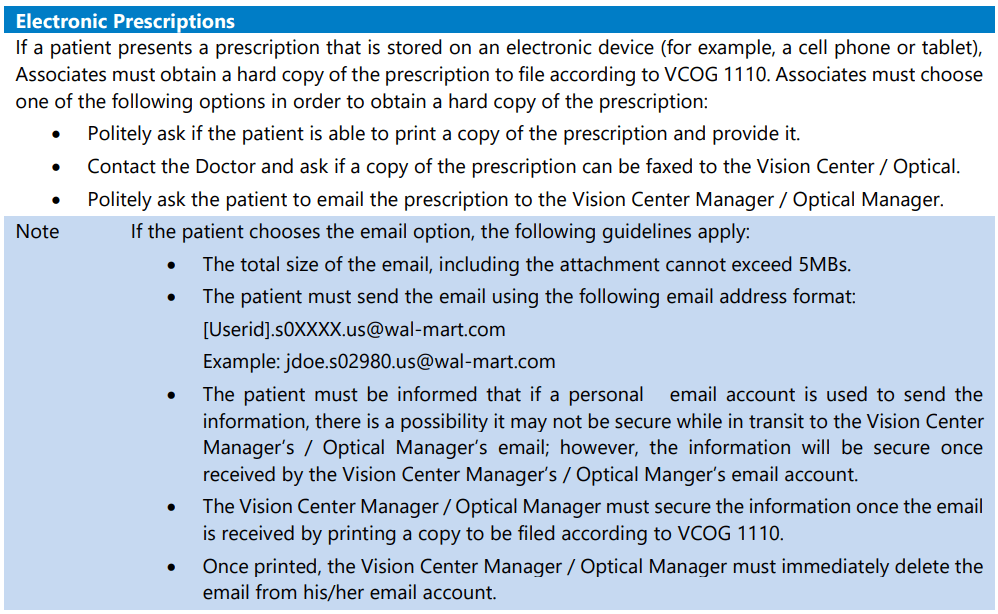
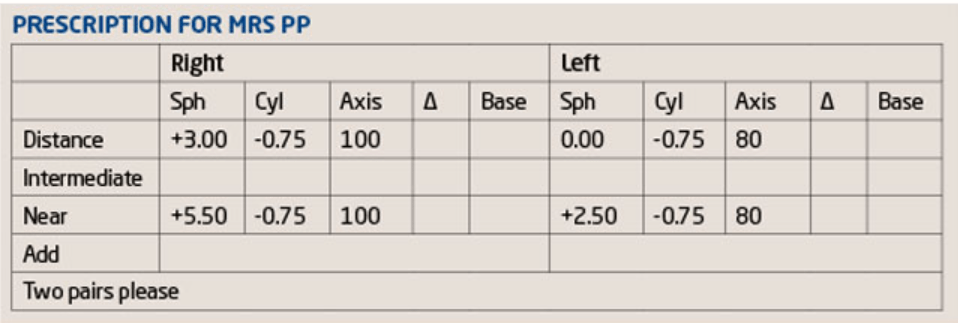
What is astigmatism and anisometropia?
The patient had undergone recent cataract surgery and intraocular lens implantation which unfortunately resulted in acquired anisometropia. She was delighted with her distance vision but was distressed because she was told by the optometrist who performed the post-operation refraction that she would no longer be able to wear progressive power lenses. The patient was successfully dispensed by the author with a pair of bi-prism Ultor freeform progressive power lenses (Norville) with the compensating prism split between the two lenses (1.5? base down RE and 1.5? base up LE). This resulted in an almost invisible blend line on the inner surface of both lenses which was very difficult to see during verification. The patient was delighted!
When dispensing PPLs to anisometropic patients some practitioners advocate the use of a short corridor design in one eye and a long corridor design in the other. If we assume a difference in corridor length of 3mm along with a relatively high reading addition of say 2.50D, the maximum vertical differential (relative) prism that can be compensated is only 0.75?. This approach may also compromise the binocular design performance of the lenses for intermediate and near vision. In cases of anisometropia some manufacturers of PPLs suggest using a short corridor design in both eyes in order to keep the magnitude of any vertical differential (relative) prism to a minimum.
A patient reports to the vision center stating that she had a lensectomy due to a congenital disease.
What is aphakia?
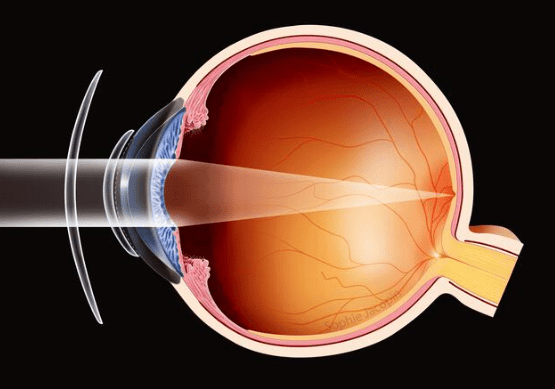
Aphakia is the absence of the lens of the eye, due to surgical removal, such as in cataract surgery, a perforating wound or ulcer, or congenital anomaly.
Aphakia is the absence of the lens of the eye, due to surgical removal, such as in cataract surgery, a perforating wound or ulcer, or congenital anomaly
A condition in which the two eyes have a need for drastically different prescriptions (>2.00 diopters of difference).
What is Anisometropia?